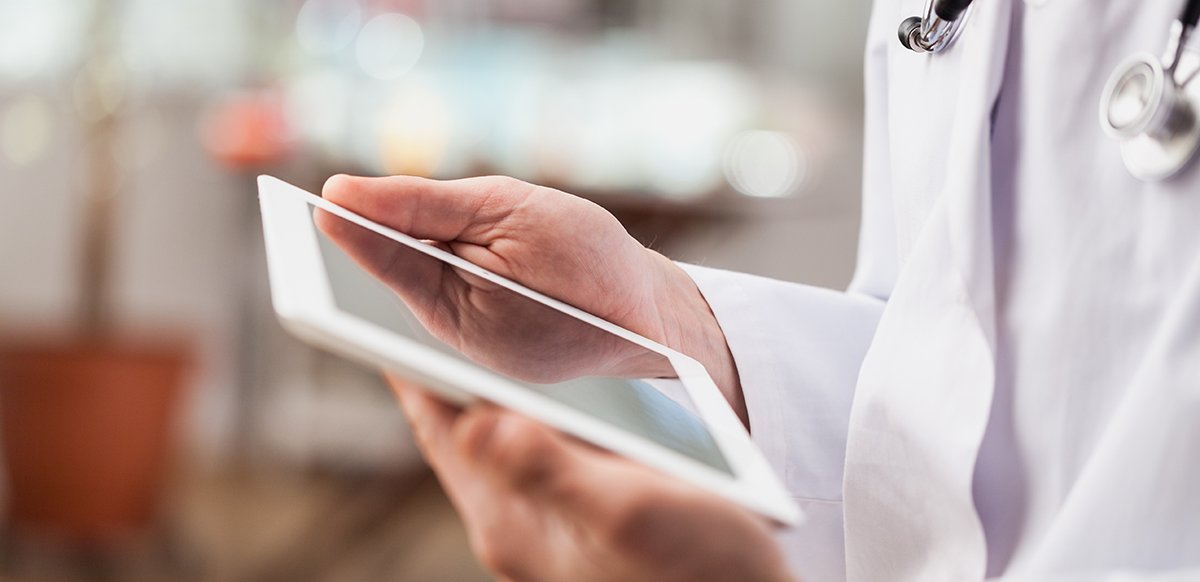
The medical world has changed drastically over the past decade. With technology rapidly evolving, healthcare offices are adopting new tools to make procedures less invasive or more accurate.
But technological advances aren’t just found in the operating room, they are also changing the patient experience in the waiting room and even in the exam room.
Discover how digital tools are making it easier for a healthcare location to support patients at every touchpoint and why medical facilities of all sizes are embracing them.
Simplify Patient Check-In with Digital Screens
Your office likely has the patient check-in process down to a science. A patient arrives, presents their identification, and then fills out several pages of paperwork before seeing the doctor. Some medical locations are bucking this trend and making it easier on patients with digital forms.
As of 2016, 77% of Americans owned smartphones, and 71% of American millennials said they were interested in managing their health through an app or website provided by their doctor.
The general population has spoken: smartphone and tablet technology is easy to navigate, even if patients are just checking in.
Consider offering a digital check-in process where patients fill out forms via touchscreen kiosks or handheld tablets. This reduces the burden on your reception staff, who can focus on answering questions, checking insurance coverage, and addressing important problems.
Even if you don’t switch to digital check-ins, patients can easily navigate a healthcare facility by checking digital waitboards to see when they will be called and if your staff needs any forms from them.
Help Patients Navigate with Digital Maps & Screens
One of the most important elements that patients look for when they navigate a healthcare location is the ability to easily find what they need. Hospitals can quickly become mazes with different specialties and seemingly endless hallways.
In fact, when asked what patients look for in a hospital, a significant part of the population answered “easy access to the bathroom and to be able to use it without being seen or heard by visitors,” and the “ability to control their privacy and not be ‘on display’ to people in the hallway.”
When visitors enter your healthcare location, make it easy for them to check-in and then find where to go. Use digital wayfinding tools to help them find the right floor or department so they don’t feel lost. These tools can also be interactive wherein users can enter their destination and receive custom directions.
Share Important Health Information Via Digital Signage
Regardless of your office or specialty, you want to keep your patients as healthy as possible. From a dermatologist encouraging patients to stay hydrated to a dentist preventing the spread of flu, the healthcare field works to keep patients as healthy as possible. However, that isn’t always easy.
The flu is notorious for traveling through hospitals and other healthcare locations. One patient comes in with flu symptoms and suddenly it’s passed through the whole building. If possible, doctors want to prevent this as much as possible.
This is where healthcare digital signage comes in. Share health alerts, flu tips, and other advice to patients while they wait. These can include simple tips like washing your hands to locations where patients can get flu shots in the building. Either way, you want to communicate with your patients clearly and easily.
Just because a patient can navigate a healthcare location doesn’t mean a highly-contagious virus should navigate it with them.
Calm Customers with Digital Entertainment
Even the most basic procedures like a mole removal or cavity filling can cause anxiety in patients. This creates undue stress on the body and can cause patients to develop an irrational fear of medical professionals. As a result, many offices work to create a calming healthcare experience or a positive dental experience for their patients.
Studies have found that playing games on tablets can calm kids before surgery more than a sedative would. Kids reported a nine point decrease in anxiety levels (on a scale of 1-11) when they were able to play games right before receiving anesthesia over kids who received a medical sedative.
This is great news for anxious kids and parents, but also useful for medical professionals.
While this data comes from studies on children, adults reach in much of the same way. Screens distract people. Even if they’re just checking Facebook or playing solitaire, screens can help patients focus on anything other than the procedure ahead. This small move makes the healthcare experience less scary for the vast majority of patients.
You can give patients access to games and entertainment by offering free WiFi or healthcare private label TV.
Educate Patients with Digital Content
Screens don’t just calm down customers and distract them from any upcoming treatment or surgery, they also help doctors and nurse practitioners share information that the patient might find useful. Instead of patients having to trust doctors or feel lost regarding their upcoming treatment, doctors can use digital signage to educate patients and make them feel more comfortable about their decision.
For example, if a patient needs to have their spinal surgery, the doctor can use a tablet or screen to show exactly what part of the spine they are operating on and what the surgical process looks like.
The patient can also use the tablet to learn about pre and post-op instructions, and learn why following these steps are important.
In theory, this could increase the success rate for doctors while decreasing infection rates as patients learn to carefully follow the doctor’s orders. More doctors are starting to carry tablets around with them, but leaving the devices in the room with patients can give them time to process information and learn about their care.
Support Patients Using Digital Tools
Patients increasingly rely on technology to navigate a healthcare location, especially if the location or offices are brand new to them. Along with physically navigating the hallways, patients need to emotionally get through the treatment experience and know what they’re about to face. Technology can give patients a beacon when they feel lost and improve the bedside manner of your staff and doctors.
You can use digital touchpoints at every phase of the patient’s experience in your healthcare system to support patients and make them feel more comfortable, informed, and relaxed.
Learn more about how you can support patients in your healthcare facility using digital tools by downloading our free ebook: The Ultimate Guide to Attracting and Retaining Patients.
